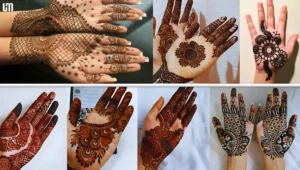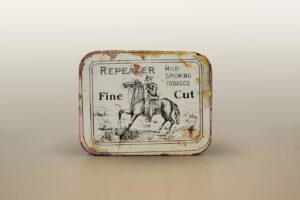A Complete Guide to Grooming Essentials for Pets
Grooming is one of the most crucial aspects of pet care, yet it is often misunderstood or overlooked. Grooming is not just about keeping your pet clean and looking good; it is also vital for their health and well-being. The process of grooming involves taking care of your pet’s coat, skin, nails, ears, and teeth. Regular grooming can help you detect early signs of health problems, such as infections, parasites, and skin conditions. It also strengthens the bond between you and your pet, making grooming a positive experience for both. In this guide, we will explore the key essentials of grooming your pets, focusing on different pet types, the necessary tools, and how to make the grooming process efficient and enjoyable.
Grooming routines vary according to the type of pet, their breed, and the environment in which they live. For example, a long-haired dog living in a humid climate will require more frequent grooming compared to a short-haired dog in a dry region. Regardless of the specifics, grooming is a routine that should be maintained to prevent issues such as matted fur, skin infections, and overgrown nails, which can lead to discomfort and more severe health problems. Grooming your pet regularly ensures they stay healthy and live a happy, comfortable life. Let’s explore the various grooming essentials in detail, considering the needs of dogs, cats, and small animals such as rabbits and guinea pigs.
The Essential Tools for Pet Grooming
When it comes to grooming, having the right tools is key to ensuring your pet remains comfortable and healthy. Brushing is one of the most important aspects of grooming. Different pets have different types of coats, and each requires a specific type of brush. Long-haired pets, such as Golden Retrievers or Persian cats, need slicker brushes or de-shedding tools to prevent matting and tangling. Short-haired pets, on the other hand, benefit from bristle brushes that remove loose hair and dirt while promoting a healthy, shiny coat. Regular brushing not only helps keep the coat in good condition but also stimulates blood circulation and allows you to check for any unusual lumps or skin problems. Another vital grooming tool is a pet-safe shampoo, specifically designed for your pet’s skin type.
Human shampoos can be harsh on your pet’s skin, leading to irritation or dryness. Use lukewarm water when bathing your pet, ensuring the shampoo is thoroughly rinsed out to avoid any residue, which could cause skin irritation. Make sure the shampoo you use is gentle and suitable for your pet’s specific needs, especially for pets with sensitive skin or allergies.
Nail trimming is an often overlooked but crucial part of grooming. Overgrown nails can cause pain and discomfort for your pet and can even lead to infections.
Grooming Techniques for Different Types of Pets
Each pet species has its own set of grooming requirements, which must be tailored to their specific needs. Dogs, for example, require regular brushing, bathing, and nail trimming, depending on their breed and activity level. Long-haired dog breeds need daily brushing to prevent their hair from matting, while short-haired breeds need brushing once or twice a week. Bathing frequency also varies based on their lifestyle. Active dogs that spend a lot of time outdoors may need more frequent baths than indoor dogs. Cats, while generally self-grooming animals, also require brushing to reduce shedding and prevent hairballs.
Long-haired cats benefit from regular grooming to avoid matting, while short-haired cats need only occasional brushing. Cats, unlike dogs, do not need frequent baths, but in cases of severe dirt or allergies, a bath may be necessary. Cats can be sensitive to bathing, so using a cat-safe shampoo and making the experience as stress-free as possible is essential for their comfort.
Small pets, such as rabbits, guinea pigs, and hamsters, have entirely different grooming needs. Rabbits and guinea pigs require regular brushing, especially during shedding seasons, to avoid matting and to keep their fur in good condition. Hamsters usually groom themselves, but if their fur becomes tangled or dirty, gentle brushing might be required. Nail trimming is also important for small animals, as overgrown nails can cause injury or infection. Providing proper bedding and chew toys helps promote dental health in small animals, which is a vital part of their grooming routine.
The Role of Grooming in Pet Health
Grooming plays a critical role in monitoring and maintaining your pet’s health. Regular grooming sessions allow you to inspect your pet for any signs of illness or discomfort, such as lumps, rashes, or parasites. Early detection of health issues through grooming can prevent them from becoming more severe. Dental care is another important aspect of grooming that directly affects your pet’s overall health. Regular brushing of your pet’s teeth with a pet-safe toothpaste helps prevent the build-up of plaque and tartar, which can lead to gum disease, tooth decay, and other health problems. Providing dental chews and toys designed to promote oral health can also be beneficial, but nothing replaces the effectiveness of regular brushing.
Cleaning your pet’s ears regularly with a vet-recommended ear cleaner helps prevent infections caused by wax build-up, moisture, or debris. Breeds with floppy ears are particularly prone to ear infections, so regular checks and cleanings are necessary. During grooming, you should also check your pet’s paws for any injuries, cracks, or foreign objects. When using a harness and leash set, ensure it fits comfortably to avoid putting unnecessary pressure on their paws. Applying a moisturizing balm to the paw pads can help keep them soft and prevent cracks, especially in harsh weather conditions. All these grooming activities contribute to your pet’s health and comfort, reducing the risk of infections and discomfort.
Making Grooming an Enjoyable Routine for Your Pet
Grooming does not have to be a stressful experience for you or your pet. With the right approach and tools, grooming sessions can become a positive bonding experience. Start grooming your pet from an early age so they become accustomed to the process. If your pet is nervous or anxious about grooming, take it slow and make sure they feel comfortable and relaxed. Use positive reinforcement, such as treats and praise, to reward them for good behavior during grooming. Regular grooming sessions also help your pet become more familiar with the process, making them less likely to resist or feel stressed. Ensuring that your grooming tools are of high quality and designed for comfort will make a big difference in your pet’s experience.
Grooming is an essential aspect of responsible pet care, impacting both the physical and emotional well-being of your pet. By incorporating grooming into your regular routine and using the right techniques and tools, you can ensure that your pet remains healthy, happy, and comfortable. Grooming is more than just maintaining a pet’s appearance; it is about preventing health issues and strengthening the bond between you and your beloved companion. Proper grooming leads to a healthier, happier life for your pet and provides you with the peace of mind that you are giving them the best care possible.













Post Comment